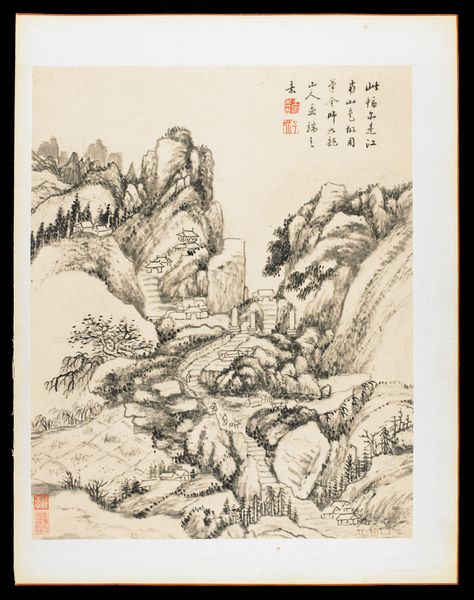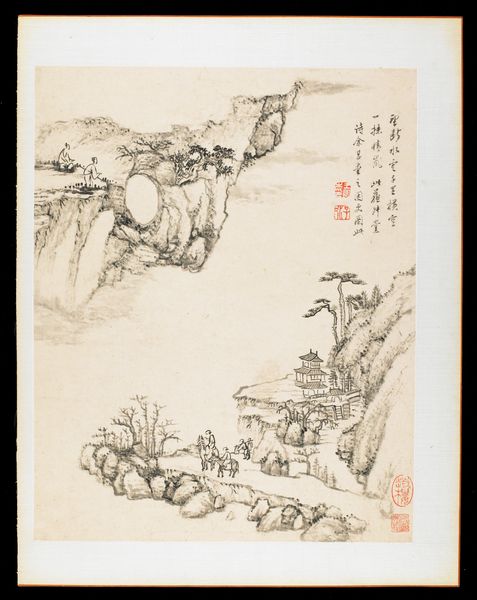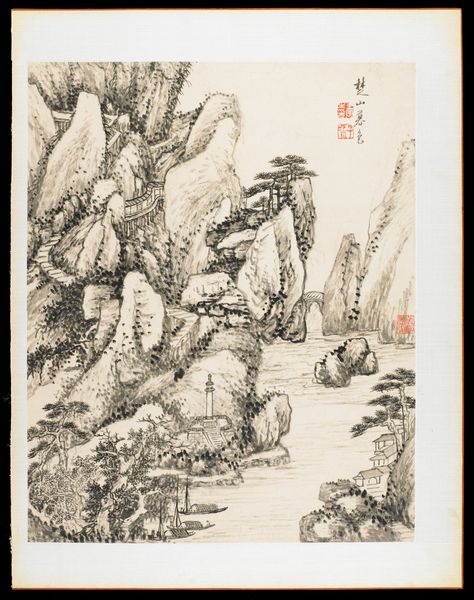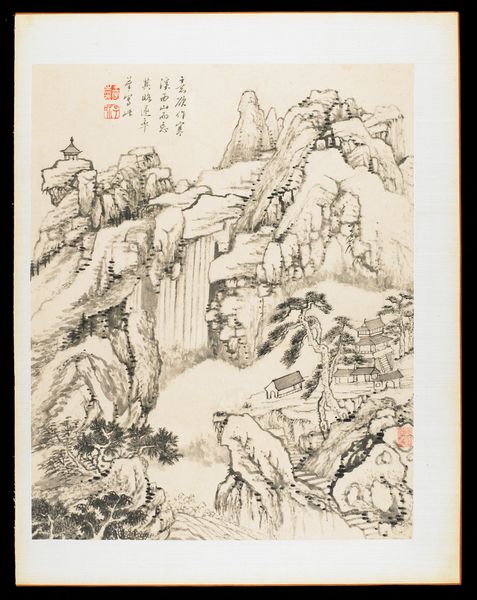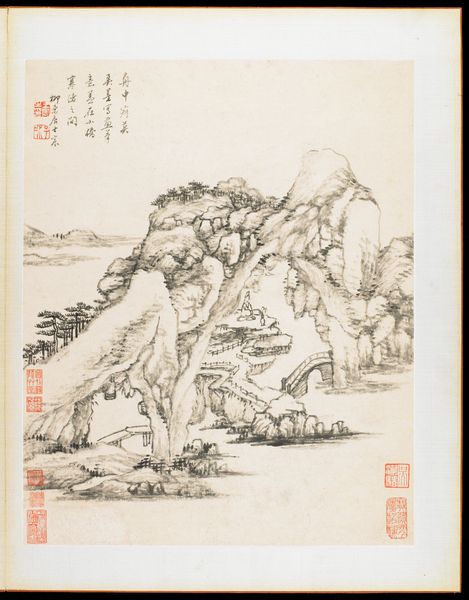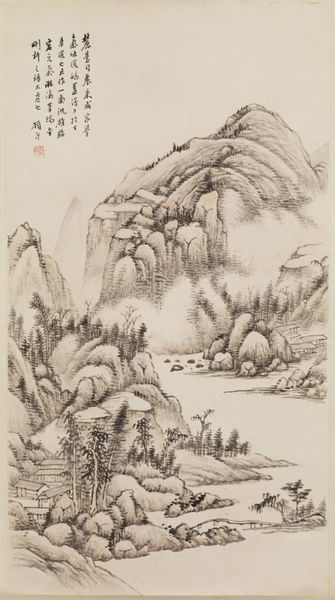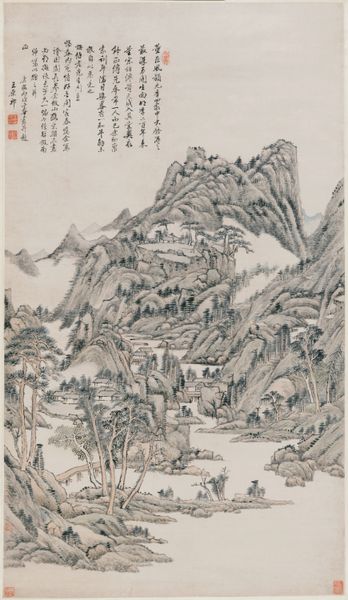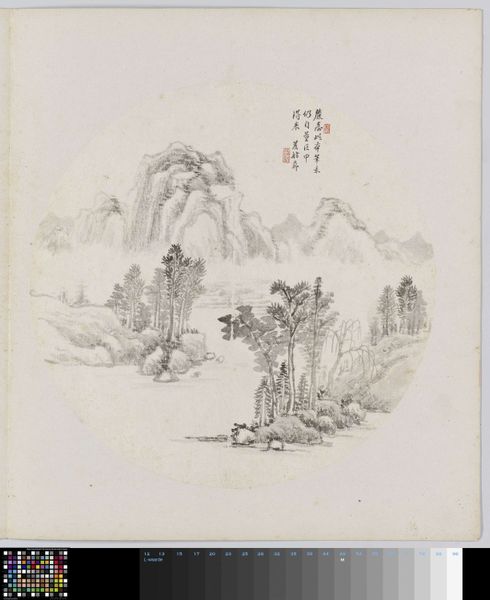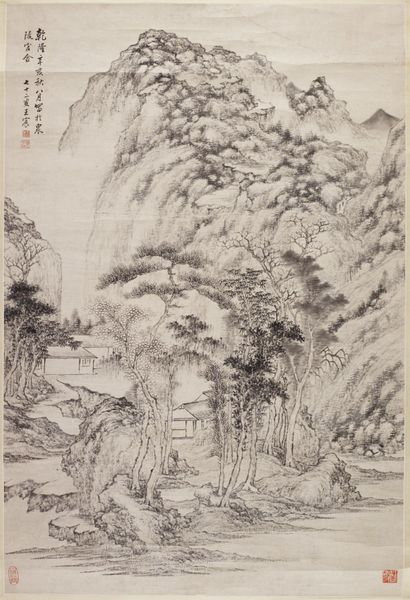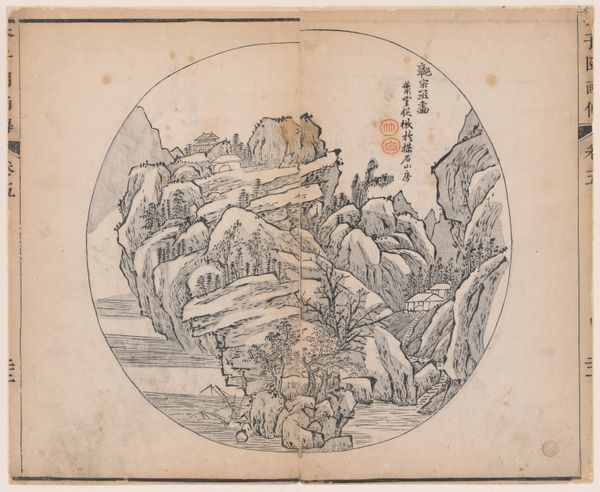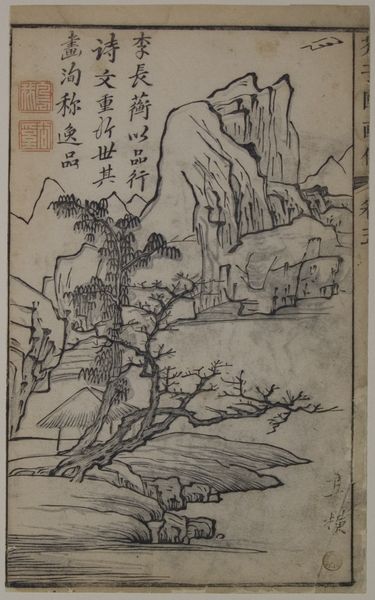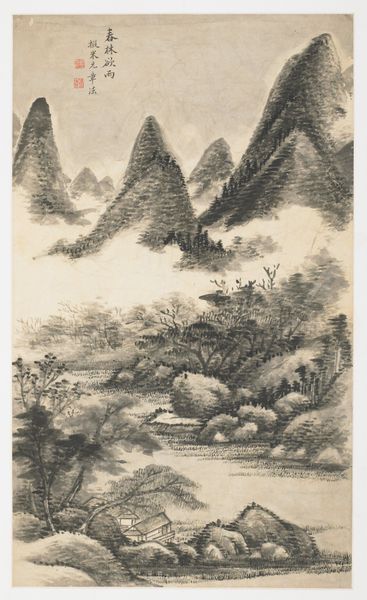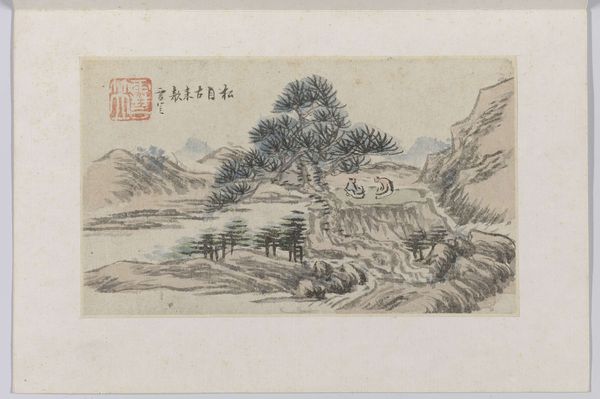
painting, paper, ink
#
ink drawing
#
ink painting
#
painting
#
asian-art
#
landscape
#
figuration
#
paper
#
ink
#
china
#
calligraphy
Dimensions: 16 7/16 x 13 3/16 in. (41.75 x 33.5 cm) (image)19 3/4 x 15 5/16 in. (50.17 x 38.89 cm) (leaf, overall)19 15/16 x 15 15/16 x 1 1/4 in. (50.6 x 40.5 x 3.2 cm) (entire album, overall, closed)
Copyright: Public Domain
Editor: This is "Album Leaf," an ink painting on paper by Wang Chen, created in 1774. I’m immediately struck by the scale of the mountains and the tiny figures within the landscape, which seems like a scene of both escape and perhaps, introspection. How do you interpret this work? Curator: Well, landscapes in Chinese art, especially during that period, often served as more than just scenic views; they functioned as symbolic projections of inner states and philosophical ideals. Do you notice any particular elements that stand out to you, carrying symbolic weight? Editor: I see the bridge with the people crossing it... perhaps the journey of life? And the calligraphy too, looks like an integral part of the composition, not just decorative. Curator: Precisely! Calligraphy unites the verbal and visual, offering insight. The bridge is a potent symbol, often suggesting transition, connection between realms, and overcoming obstacles. Note how the mountains themselves—conventionally symbols of steadfastness and the dwelling place of immortals— are rendered in a rather soft ink wash. Editor: So the mountains aren’t just mountains. It’s fascinating how the artist is using this whole visual vocabulary to create deeper meanings. I'm used to reading landscapes in terms of physical geography. Curator: Indeed, Chinese landscape painting invites us to “read” beyond the purely representational. We are engaging with cultural memory and a longstanding artistic tradition steeped in emotional resonance. Have your perspectives on traditional landscapes shifted? Editor: Absolutely. I see now how symbols, composition, even brushstrokes can create layers of meaning that invite you into a story – into a different worldview. Curator: I agree! Now you have discovered some visual techniques, cultural narratives and symbols which give lasting emotional meaning through the artistic process.
Comments
minneapolisinstituteofart almost 2 years ago
⋮
Born in Kiangsu province, Wang Ch'en was a descendant of the great literatus Wang Shih-min and a great grandson of the artist Wang Yuan-ch'i. He served for a while in the Grand Secretariat and as a prefect in Hunan province. Wang's illustrious family heritage strengthened his reputation as an orthodox painter and he is one of the so-called Four Minor Wangs of the later Ch'ing. Wang's inscriptions here indicate that the basis for this album of large landscapes was the natural scenery of Ch'u, a Warring States (480-221 BCE) kingdom located south of the Yangtze River. In 1774, Wang was serving as a low-level official in this region. His inscriptions also mention earlier poets and painters whose conceptual and stylistic influences along with natural scenery inspired the various scenes here, which were based on sketches made at the sites themselves. The inscriptions read: 1) The landscape of Ch'u is extremely scenic. I came across one place and sketched it but neglected to ask its name. 2) One morning I entered the sea in search of Li Po; looking in vain among the paintings of mere mortals for the "Immortal of Ink." 3) The ceremonial burial mounds and Szechuan are neat. This is a scene of entering the gorge. 4) I have used the brushwork of Shu-ming (Wang Meng) to paint the style of Old Man Sung-hsueh (Chao Meng-fu). There is resemblance because they are from the same family.
Join the conversation
Join millions of artists and users on Artera today and experience the ultimate creative platform.
